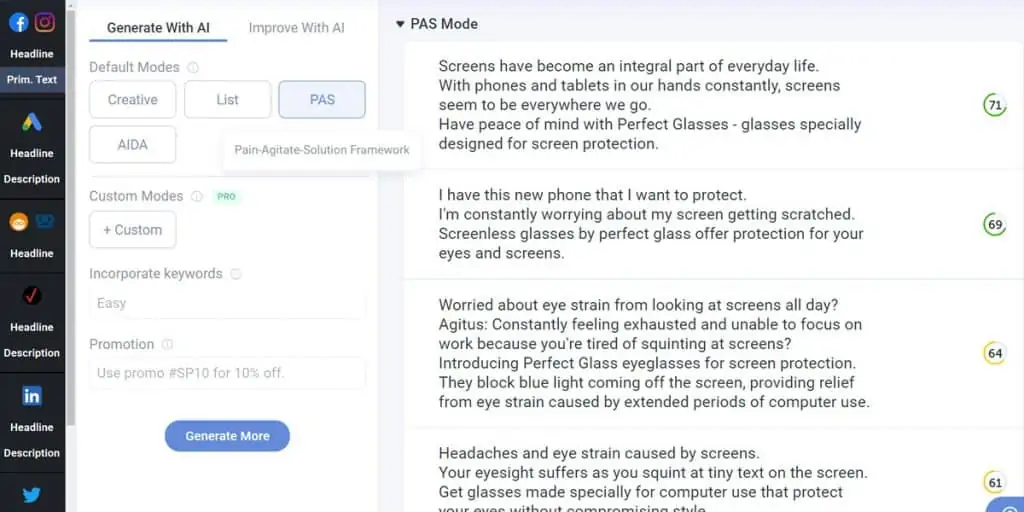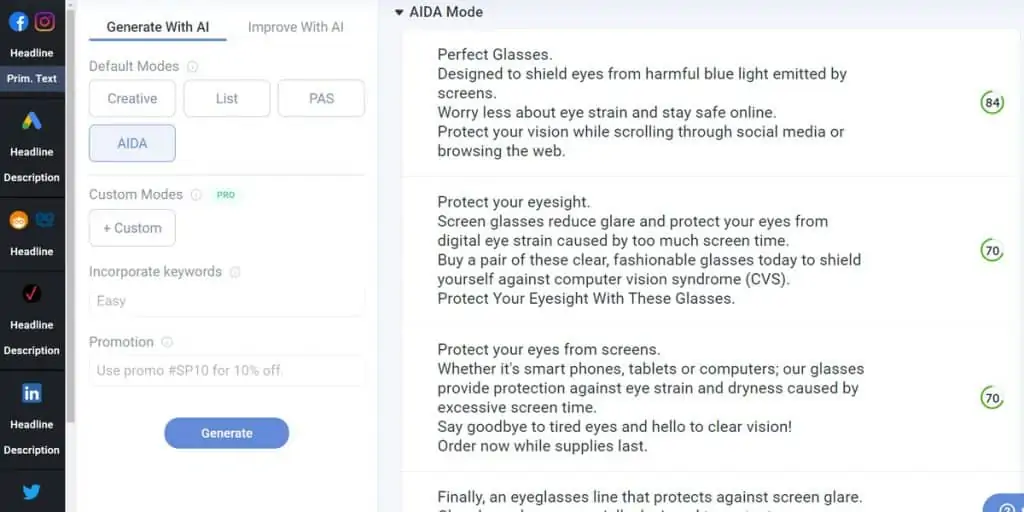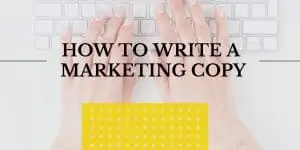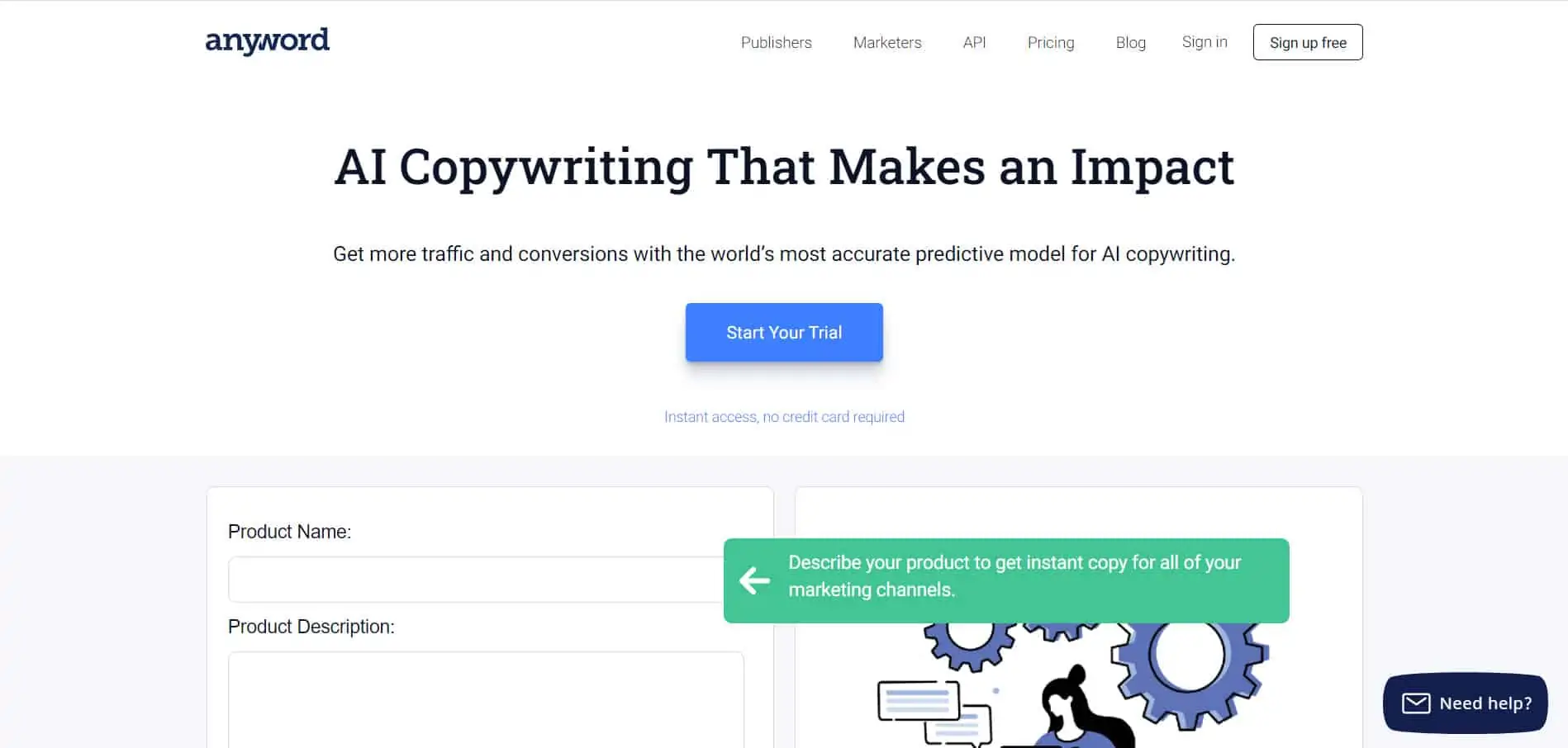Last Updated on 3 years by Christopher Jan Benitez
How to write a marketing copy
Looking to write a perfect marketing copy?
Writing a marketing copy can be tough. There’s a lot of factors before you will be able to write a compelling one, and the text is just a portion of it.
Let’s talk about what exactly is a marketing copy and how can write one that will drive high conversion rates.
First, let’s define what a marketing copy is.
What’s a marketing copy?
The simplest definition of marketing copy is that it’s a text used to sell something.
Marketing copy can be in the form of a blog post, email newsletter, banner ads, landing pages, or any other type of digital media.
In writing one, your objective is to get people interested in what you have for them. And then motivate them into purchasing it.
However, it’s more than just writing. You also have to identify the goals, the channels, and the type of content that you want to market.
Let’s say you want to sell a t-shirt on social media through Facebook ads.
Are you going to make an image banner or is a video better for you? Do you simply want to get gain brand awareness? Or do you want them to click and actually buy your t-shirt?
These are mainly the questions to ask yourself before you begin writing a marketing copy.
Let’s do it step by step!
1. Set an objective
What do you really want to achieve with your marketing copy?
- Do you want them to read your post?
- Do you want them to subscribe to your email newsletter?
- Do you want them to buy your product?
There are many objectives that you need to identify prior to writing your copies. Sometimes, you can hit two birds at once.
For example, you can get your audience to subscribe to your newsletter and then buy your product.
Or just focus on one objective per marketing copy, it’s up to your strategy.
2. Choose a channel or platform
Not every copy works for every platform. But don’t worry, you can always repurpose them to fit any channel.
Here are some marketing channels you can explore:
- Social media
- Search ads
- Product description
- Blog post
- Landing page
You also have to remember that there are different types of audiences for each channel. The way you use your copy on social media will have a different tone on landing pages.
3. Identify your target audience
When it comes to marketing, you cannot just speak to anyone. You need to know who your target audience is to help you highlight pain points and use them as the key to your marketing copy.
Start with defining who they are by looking at demographics like age range or gender. Then look at their interests and see what types of things they might enjoy.
Finally, identify where they are hanging out. In other words, know the channels that you need to use in order to reach them.
The more information that you have with your target audience the better.
4. Write your marketing copy
Now, it’s time to write your copy!
Remember: It’s all about grabbing your audience’s attention and getting them to convert. We’ll cover some tips on how to write an effective marketing copy and improve the process using Anyword.
Keep it short and simple
People don’t like to read long, especially a sales pitch.
Use short sentences or phrases and get to the point!
The longer your copy is the longer it is for your customer to convert. And your goal is to make the journey to conversion as short as possible.
Grab attention in just a quick glance and make them want what you have!
Add a sense of urgency
Find a way to convince your potential market to buy your product, and to buy it right now. This great technique is used to motivate a market that may otherwise delay purchasing.
For instance, you can offer something and set a deadline. It’s one of the proven ways to get your audience to act and act quickly.
Another thing is scarcity. If you have a limited product on sale for a limited time, you may trigger your audience’s fear of missing out on the best deal.
However, do not overdo it as it may backfire and cause frustration to your potential buyers.
Invoke emotions
As it turns out, emotions are a factor in buying which you can capitalize on.
If we’re feeling motivated to be fit, we’re highly likely to buy some gym equipment or do some healthy grocery shopping.
This same logic applies to marketing copies. You need to capture people’s attention by capitalizing on their emotions and effectively persuade them to buy your product.
You can use analogies or share relatable customer stories to connect with your market.
That being said, let’s explore some copywriting formulas using a copywriting tool called Anyword.
Pros
- Creates usable, one-click, AI-generated copy for your campaigns.
- Polished UX makes creating AI copy a cinch!
- Affordable pricing with generous word limit
Cons
- Limited industry options
Anyword is an AI-powered copywriting platform that helps marketers tailor their messages to their ideal audience. It generates and evaluates copy for ads, social posts, email subject lines, landing page copy, and much more.
There are many copywriting formulas out there but we’ll talk about some of the common ones.
First up is PAS, short for Pain, Agitate, and Solve.
It’s a copywriting formula that’s meant to identify the problems of your audience, make it sting a bit more, and then provide a solution.
It sounds like you’re adding more salt to the wound and trying to be the hero at the same time. And it works!
Invoking emotions through your copies adds a personal touch and helps readers connect with what’s being said.
To give you an idea of how PAS looks like, let’s try writing some using Anyword.
Here’s a closer look:

All you have to do is input the name of your product and add some descriptions.
It will show you some variations that you can already use or tweak a little to fit your taste.
Don’t like any of them? The good thing is Anyword can generate hundreds of copies to choose from.
Make it about your audience
What’s in it for them?
Why should they buy your product or avail your service?
Speak to your audience in a way that what you’re selling will really benefit them.
Don’t make it about you. Unless you’re as big as Apple or have a big following already, your audience doesn’t really care that much.
Rather than saying: “We provide the best power washing services in town.”
You say: “Get the shiniest looking patio by booking our power washing service.”
You get the idea.
What people care about is what they will get from you and how it will positively impact their life.
To show you an example, let’s go back to Anyword and generate AIDA copies about eyeglasses.

AIDA is short for Attention, Interest, Desire, and Action.
This model works best if it’s perfectly aligned with your audience and their motivations.
To put it simply, if you know who your audience is you know how to attract them.
Compelling CTA
You’ve got the best copies there and someone wants to buy your product. What’s the next step for them?
Complete your marketing with a clear CTA. In short, get them to do a specific action that will lead them to convert.
It sounds simple enough but there are many things that go into producing an effective CTA button. If it’s not done correctly it will result in lost customers and lost sales.
So do not waste that opportunity just because your readers are left confused thinking of what to do next.
Conclusion
In a nutshell, a marketing copy’s main purpose is to convert.
Imagine writing a few words that will net you up to thousands of sales if you do it right.
It’s not easy, so you can always use a tool like Anyword to eliminate writer’s block and provide you better options to use.
Writing an effective marketing copy goes a long way and directly affects your brand’s profitability.


